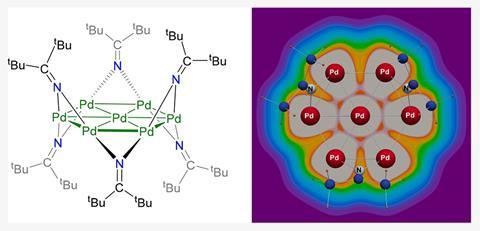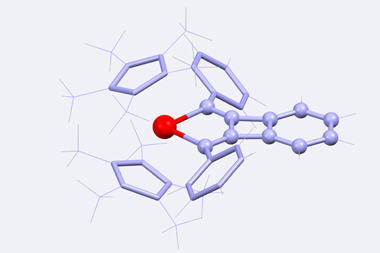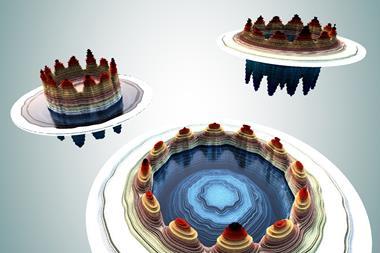
Chemists have constructed the first hexagonal palladium cluster that not only looks like benzene but is also as aromatic.
There are other non-carbon and metal clusters, some with regular and others with rarer types of aromaticity. But this is the first example of an all-metal system with benzene-like symmetry.
At the molecule’s core there are seven palladium atoms, six arranged in a hexagon and another one sitting in the middle. All are connected by single bonds. Stabilising ketimide ligands (R2C═N–) bridge each pair of adjacent outer atoms. According to calculations, the molecule’s aromatic ring current is almost the same as benzene’s.
The researchers behind the work weren’t initially looking for aromaticity, but rather for ways to stabilise palladium clusters. These are rare but potentially useful compounds given how catalytically active palladium is. It turns out that surrounding the [Pd7]6+ cluster with six ketimide anions produces a deep green solid that’s stable when kept cold and under inert gas.
The mixed-valence palladium compound – oxidation states +1 and 0 – reacts with triphenyl phosphine to form a palladium(0) phosphine complex. This, the researchers suggest, could make it useful for cross coupling reactions, many of which use similar compounds as catalysts.
This article was updated on 27 January 2020. It had previously included an incorrect statement that the cluster exhibited π aromaticity.
References
A W Cook et al, Inorg. Chem., 2020, 59, 1471 (DOI: 10.1021/acs.inorgchem.9b03276)

















No comments yet